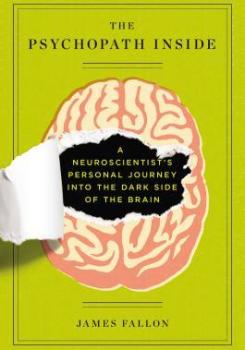Am I A Psychopath?
An excerpt from “The Psychopath Inside: A Neuroscientist’s Personal Journey into the Dark Side of the Brain.”
The following is an excerpt from The Psychopath Inside: A Neuroscientist’s Personal Journey into the Dark Side of the Brain, by James Fallon.
One October day in 2005, as the last vestiges of an Indian summer moved across Southern California, I was inputting some last-minute changes into a paper I was planning to submit to the Ohio State Journal of Criminal Law. I had titled it “Neuroanatomical Background to Understanding the Brain of a Young Psychopath” and based it on a long series of analyses I had performed, on and off for a decade, of individual brain scans of psychopathic murderers. These are some of the baddest dudes you can imagine—they’d done some heinous things over the years, things that would make you cringe if I didn’t have to adhere to confidentiality agreements and could tell you about them.
But their pasts weren’t the only things that separated them from the rest of us. As a neuroscientist well into the fourth decade of my career, I’d looked at a lot of brain scans over the years, and these had been different. The brains belonging to these killers shared a rare and alarming pattern of low brain function in certain parts of the frontal and temporal lobes—areas commonly associated with self-control and empathy. This makes sense for those with a history of inhuman violence, since the reduction of activity in these regions suggests a lack of a normal sense of moral reasoning and of the ability to inhibit their impulses. I explained this pattern in my paper, submitted it for publication, and turned my attention to the next project.
At the same time I’d been studying the murderers’ scans, my lab had been conducting a separate study exploring which genes, if any, are linked to Alzheimer’s disease. As part of our research, my colleagues and I had run genetic tests and taken brain scans of several Alzheimer’s patients as well as several members of my family, who were serving as the normal, control group.

On this same October day, I sat down to analyze my family’s scans and noticed that the last scan in the pile was strikingly odd. In fact it looked exactly like the most abnormal of the scans I had just been writing about, suggesting that the poor individual it belonged to was a psychopath—or at least shared an uncomfortable amount of traits with one. Not suspicious of any of my family members, I naturally assumed that their scans had somehow been mixed with the other pile on the table. I generally have a lot of research going on at one time, and even though I try to keep my work organized it was entirely possible for things to get mixed up. Unfortunately, since we were trying to keep the scans anonymous, we’d coded them to hide the names of the individuals they belonged to. To be sure I hadn’t mixed anything up, I asked our lab technician to break the blind code.
When I found out who the scan belonged to, I had to believe there was a mistake. In a fit of pique, I asked the technician to check the scanner and all the notes from the other imaging and database technicians.
But there had been no mistake.
The scan was mine.
Reprinted from The Psychopath Inside: A Neuroscientist’s Personal Journey into the Dark Side of the Brain, by James Fallon with permission of Current, a member of Penguin Group (USA) LLC, A Penguin Random House Company. Copyright (c) James Fallon, 2013.
James Fallon is the author of The Psychopath Inside: A Neuroscientist’s Personal Journey into the Dark Side of the Brain (Current, 2013) and a professor of psychiatry and human behavior at the University of California, Irvine in Irvine, California.